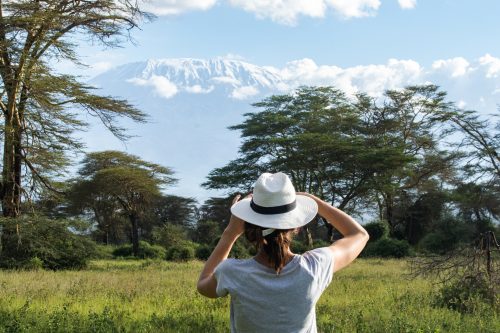
My recent journey to Amboseli National Park from the larger and more familiar Maasai Mara National Reserve opened my eyes both to the similarities of the game and natural vistas – as well as what set the two wildlife areas apart. While the Mara boasts a ton of grass from the ongoing rains, a more semi-arid Amboseli whirls with dust devils. This comes in handy for the elephant, Africa’s gentle giants, who take an afternoon break from foraging for a dust bath. The underground springs from the rain and snow that fall on mighty Kilimanjaro ooze out of the ground in Amboseli forming a sedge-dominated marsh (a grasslike plant) that serves as an oasis from the otherwise sun-baked open space. Here wildlife thrives. In the Mara, the elephants are darkened from the black cotton soil and mud that they wallow in, while in Amboseli the elephants assume a light colour from the white volcanic ash.

A giant stands in your face. Rising above the ground is Africa's tallest point, Kilimanjaro. In most mornings and afternoons she stood clear and visible. Capturing her from every perspective from round the park felt surreal, contrasted by the reality of her very persistent existence.

Mastering this art is a survival skill that every elephant learns from the very first days of their life to clean and protect their skin. Driving from Observation Hill, I came across this bull immersed in the act of blowing dust onto his body. I was wary because, unlike the easily approachable and a bit smaller Mara elephants in comparison, Amboseli's giants – including this one – need extra caution. Eventually, he seemed to calm around the car and proceeded to dust himself as I captured the moment.

Amboseli's water havens have created a comfort zone from the scorching sun for many species, among them birds of all colours. Here flamingos, whistling ducks, fish eagles, and pelicans along with many others easily find a home. My indulgence was this amazing saddle-billed stork. As if to show off the full arsenal in his beauty, he spread his wings – one of the widest spans in the world of birds.

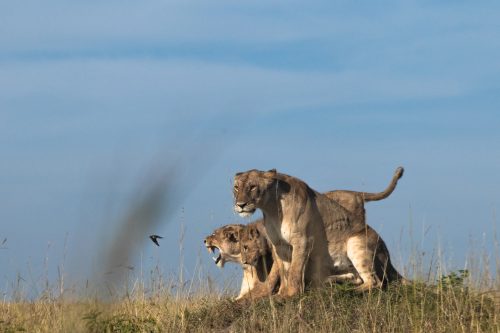
During a drive after my return from Amboseli, I am in the land that Slit Lip, the Egyptian Goose Pride dominant male, traverses. On a misty morning, I find him deep in the grass walking, following a scent trail. His walk is punctuated by several stops to scan above the tall grass. My guess is he was looking for the females from his pride. He looked okay but he needed some feeding. I hung around with him and soon after he led me to the females and the cubs perched on a delightful termite mound.
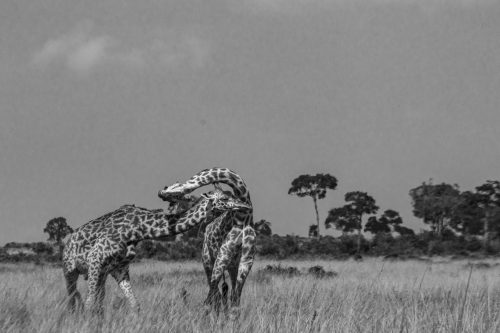
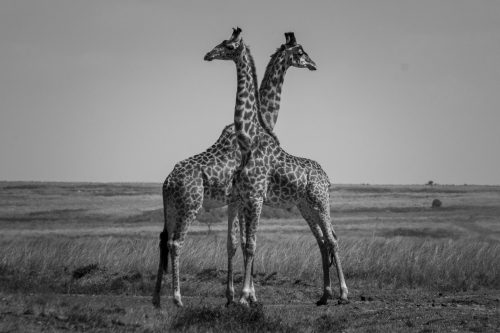
I must say this has been a week that seemed like all rivalry and political instability in the giraffes hierarchy had been put to the test. Not one, not three, but five different pairs of giraffes fighting in a day; it seemed like too much to comprehend. To some it seemed playful, but to others it was intense – a proper scouring of their differences.

Capturing the beauty of a Mara regular, the lilac-breasted roller, in her entirety has always been a challenge that I rally guests into trying to do. I managed to capture the number one bird of the country with its full wings on display.

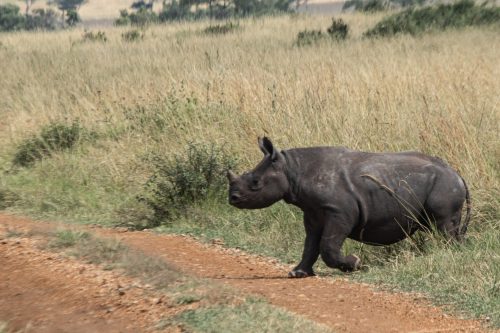
For the last decade that I have guided in the Maasai Mara the story that has embodied the true meaning of conservation is the black rhino story. The Mara is advocating for their monitoring and protection, and the Angama Foundation finds the gap in the efforts needed and throws its weight behind it. In an era when the horn is struggling to stay with the rhino, it is total bliss to be treated with a black rhino sighting.

No pride creates as much of a spectacle as the massive Border Pride. One morning this past week, I set off from camp quite soon after first light having been tipped off by one of my team members on where the pride was seen the night before. It's been a while since I last drove around this less-trafficked area of the reserve. At first, nothing seemed to be happening. Then, a harem of impalas appeared to be leading me to something – one head of a lioness peeped through the grass. One more head was followed by several others and soon they filled the space. Once they realized that their cover had been blown by the more vigilant impalas, they abandoned their hunt and moved on to rest.
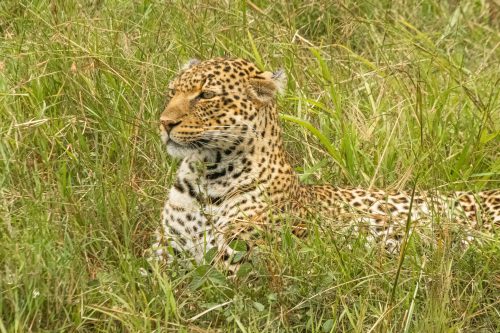
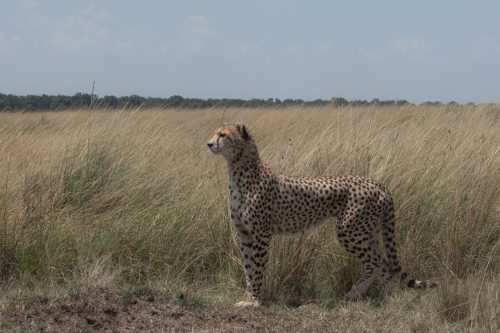
The week has also brought out both Lorian the leopard and Romi the cheetah. Whichever you prefer, you can agree to their beauty. At the very north of the Mara triangle, Romi roams along the Mara River and the area between Kichwa Tembo airstrip and the Oloololo Gate occasionally crossing the Mara river west of Musiara Gate, back and forth. The elusive Lorian on the other hand, with her even more elusive cub, has had the drainage lines east of Look Out Hill to themselves. It is a real treat to see her from time to time.

All six cubs from the Egyptian Goose Pride are still holding tight together with Split Nose seen near them at most times. It looks like he is the babysitter daddy. During the week the females have been around quite often, and with the onset of the rains, love is also in the air. Here I found the cubs overly interested in one female after her return from a hunting spree.

“What business do you have?” So these banded mongooses seem to ask. “I have a business of mongoose,” I could answer. Timid on most occasions it's not always easy to have them wait for you to capture. The rains have brought more life and insects so they are more focused on hunting lately. At the first sign that their safety may be in jeopardy you will find them inspecting on their twos (hind legs). You will commonly come across these little detectives of the bush while on safari at Angama.
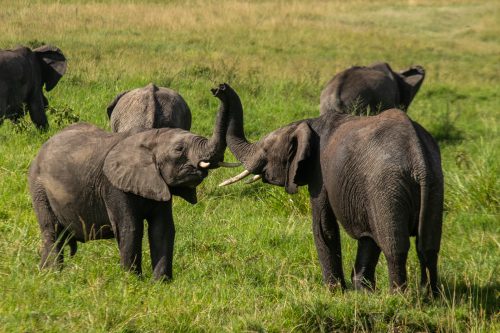
The grass is bountiful now as the land soaks in the favourable weather. With food aplenty, the teenagers grow more confident which might escalate at times. On this morning, as the elephants journeyed downhill near the Out Of Africa drainage line, two teenagers who had been eyeing one another engaged in a match of push and shove. Soon, they realized that the family had covered some ground. After they seemed to high-five each other, they hurriedly squashed grass under their feet as they gained the ground they had lost.
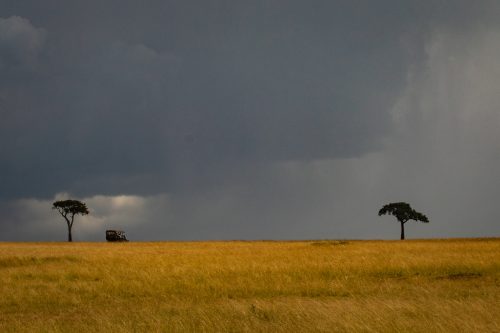
On most evenings the clouds have been gathering in earnest and full of intent. Of course, the long rains are beckoning. Clouds and rain are major characteristics in photography. I caught up with a safari vehicle against a dark background as the weather was building. These late afternoon clouds are always ones to look out for, they make amazing shots as the storm heads into the face of Angama from the East.
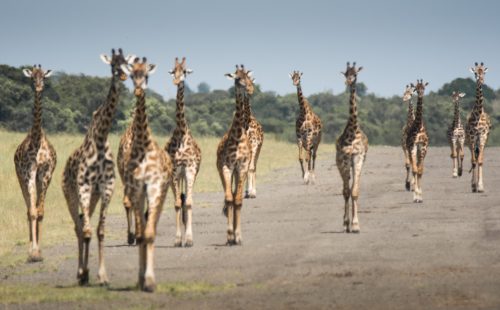
This week a year ago, Mwikali Ndambo spotted this journey of giraffe walking down the runway of the Angama Airstrip and pondered if the correct term for them should rather be a ‘catwalk’?
Filed under: This Week at Angama
Subscribe for Weekly Stories
Comments (0):
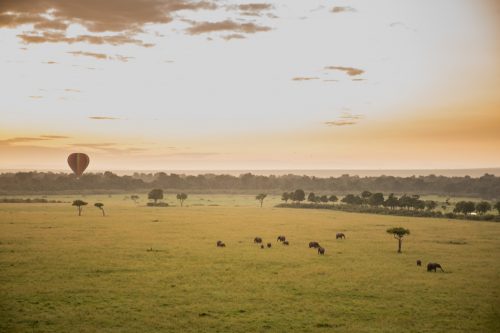
Hot-air Ballooning